Driving on a flat tire can have some severe consequences.
The bottom line when driving on ONE flat tire is not only dangerous but also illegal.
It can create problems for the car and the driver. Flat tires can cause accidents, damage your vehicle and even lead to severe injury.
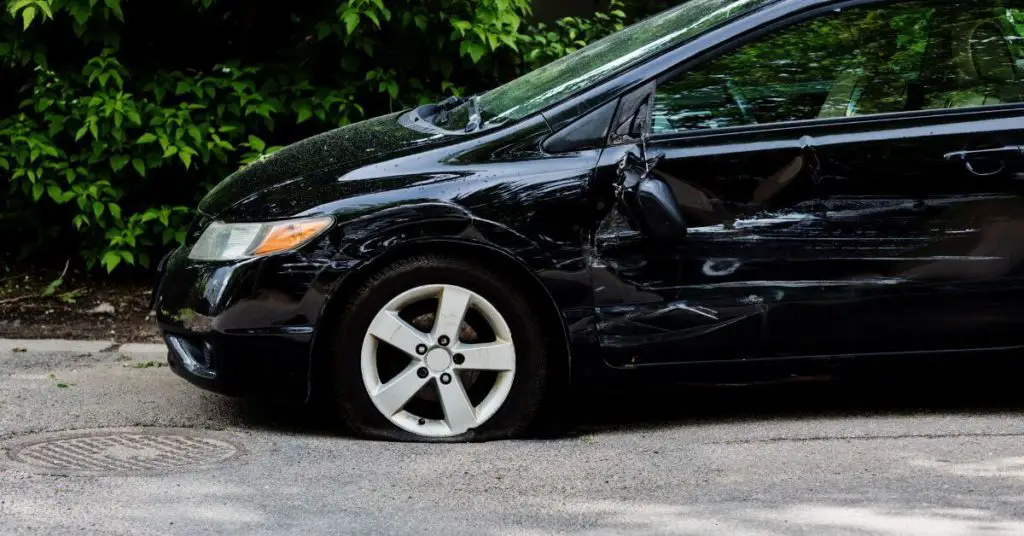
A flat tire is a condition in which the air pressure in the tire has been lost or decreased so that it cannot support its weight.
The most common causes of a flat tire are driving over something sharp like nails, hitting something like a pothole or curb, or driving over an object like metal or glass.
Table of Contents
If you have to drive on a flat tire:
- Drive slowly and carefully
- Keep your speed below 50 mph
- Avoid sudden braking or turning
You should never drive on a flat tire. Driving even a short distance on a flat tire can cause the rim to come into contact with the ground, damaging the rim and leading to an accident.
Do not drive on a flat tire for any reason. If you have to drive, pull over and change it as soon as possible.
The first and most obvious effect of driving on a flat tire is that the car will move much slower than it should.
The vehicle will have to work harder to go up hills and over bumps in the road. It will also produce more noise, which may draw the attention of other drivers.
Tires & WheelsThe second effect of driving on a flat tire is that it will wear down the other tires faster than expected. This is because they constantly work harder than they should, leading to them wearing out much quicker.
Thirdly, The bottom line when driving on ONE flat tire is illegal.
It is against the law to damage the roads by driving on the rim of a flat tire or by any other means.
It varies from state to state, but yes, that’s actually a law.
Puncture: Puncture is the most common type of tire failure. Puncture usually occurs when a sharp object pierces the tire and punctures its inner tube.
Flat Tire: A flat is when the tire has lost all of its air pressure and can no longer support the weight of a vehicle.
How do you know when your tire is low?
You can do a few things to know when your tire pressure is low. You can use a tire gauge to measure the pressure in your tires.
You should also watch for changes in how your car drives and handles.
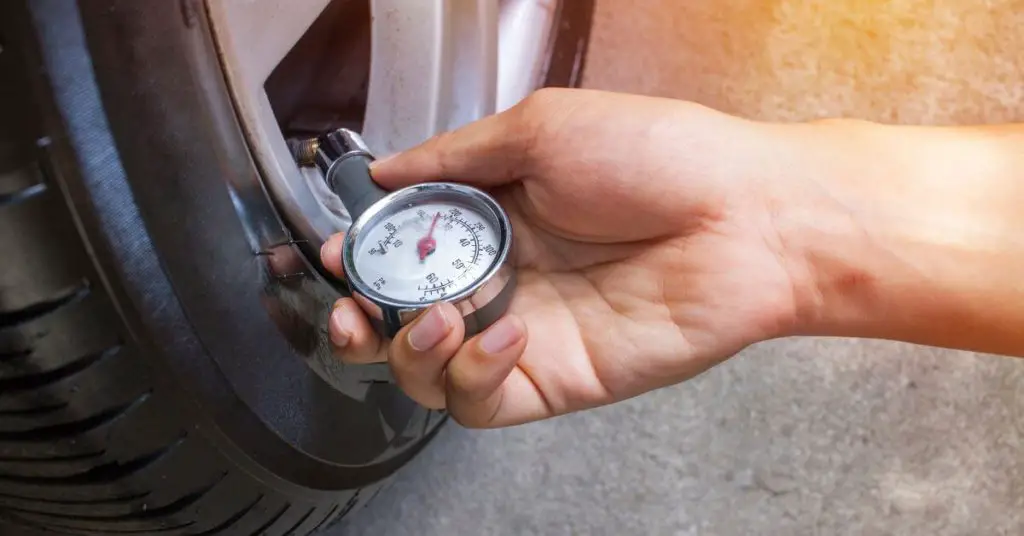
If you notice that your car is pulling to one side, it could be because one of the tires has less air than the others.
If your steering wheel is not as responsive as usual or feels loose and wobbly, it could be because one of your tires has less air than the others.
Some telltale signs of a low tire include:
- The car is riding on one side of the tire
- The vehicle pulls to one side when you drive
- You can see the tire store’s treads.
How many miles can a driver go on a flat tire?
The bottom line when driving on ONE flat tire, that can be a significant issue for a driver.
The most common question is how many miles can they go on their flat tire?
The answer is that it depends on the vehicle type and tire type.
Every car has different tires so we will look at two various examples. For example, if you have a sedan with standard tires, you can go about 60 miles before the tire becomes unusable. If you have a truck with off-road tires, you can go about 150 miles before the tire becomes unusable.
Let’s put it this way:
You should never drive on a flat tire. Driving even a short distance on a flat tire can cause the rim to come into contact with the ground, which will result in damage to the rim and could lead to an accident.
What are your options when a tire is flat?
The first option is to call roadside assistance. Roadside assistance usually comes with a tow truck; sometimes, they may also have a spare tire.
The second option is to use your spare tire. If you have a full-size spare tire, you may be able to use it if your vehicle can accommodate the size of the spare.

The third option is to purchase a new tire and replace it yourself or take your vehicle to an auto repair shop for help.
The first two options are easy enough, but if you don’t have roadside assistance or a full-size spare, you’ll need another way to get home or get the car towed for repairs.
Is it possible to drive on two flat tires?
No, it is not possible to drive on two flat tires.
How much does it cost to replace a tire?
Tires are an essential part of a car. They connect the vehicle to the road and allow it to move.
Tires also allow for a smooth and safe ride. If your tire has a puncture or other problem, The bottom line when driving on ONE flat tire, you must replace it as soon as possible.
The cost of replacing a tire can vary greatly depending on the type of tire, where you live, and how many tires you need replacing. The average price is around $150 per tire.
The first thing you need to do when looking for a new tire is to figure out what tire you need. Before purchasing, you should also ensure your car or truck has enough clearance for the new tires.
Before entering the store, you must find the type of tires you want.
There are four main types of tires: all-season, summer-only, winter-only, and all-terrain.

What are the different types of tires?
Tires are a vital part of any vehicle, as they are the only part that comes in contact with the ground. Many different types of tires can be used for various purposes.
There are four main categories of tires: off-road, on-road, all-terrain, and winter. Off-road tires can be used for various terrains, such as sand, mud, and snow.
On-road tires should always be used on paved roads to provide a safe driving experience.
All-terrain tires can be used on paved roads and off-road terrain, while winter tires are meant to be used during winter.
While driving on a flat tire is risky, choosing the right tire can make a world of difference in your driving experience. Learn more about the technology behind the quietest tires to make an informed decision.
What is the minimum tread depth for tires?
There is no single answer to this question. It depends on the manufacturer and the type of tire. If a tire is designed for winter use, it might have a deeper tread depth than one that is not.
The tread depth of your tires can be found on the tire’s sidewall. It can also be found in your car’s manual.
The tread depth of a tire is the distance from the top of the tread to the bottom. This can be measured in millimeters or inches.
The minimum tread depth for tires is 2/32nds, about 1/16th of an inch.
You should be aware of a few reasons; for example,
if your tires have less than this, they may not provide adequate traction in all weather conditions, and you may not be able to stop your car as quickly on slippery surfaces.
How long and how fast can I drive on a spare tire?
Driving on a spare tire can be dangerous. The spare tire is only meant for emergencies and should not be relied on to drive long distances.
A spare tire is designed to support a vehicle in an emergency temporarily. It is not intended for long-term use, so it will wear out much faster than regular tires and may not match the specifications of the rest of your tires.
If you need to drive with a spare tire, keep your speed low and avoid driving over 50 miles per hour (80 km/h) or more than 10 miles (16 km).
How to change a flat tire?
A flat tire is an unexpected event that can disrupt your day significantly. The good news is that it is easy to change your tire on a car, and with the right tools, like a jack and a lug wrench, you can do it in under 20 minutes.

- The first step is to position the car so that it is on the side of the road with plenty of space in front and behind.
- Open the hood and loosen the lug nuts, carefully not strip or damage them.
- Use the jack to raise one side of the car, then lower it safely on an elevated surface like concrete or asphalt.
- Loosen all lug nuts before removing them.
- Remove any hubcaps before loosening any other bolts.
- Please remove any remaining bolts with a ratchet wrench, pull out your flat tire, and replace it with a spare using the above sequence in reverse order.
First, tighten lug nuts with your hands, then use a ratchet wrench until the bolt head is flush with the hubcap before tightening once again at least halfway (but no more than two-thirds).
Lower the vehicle to the ground until it sits under its weight.
You good to go
How do I know if my car needs new tires?
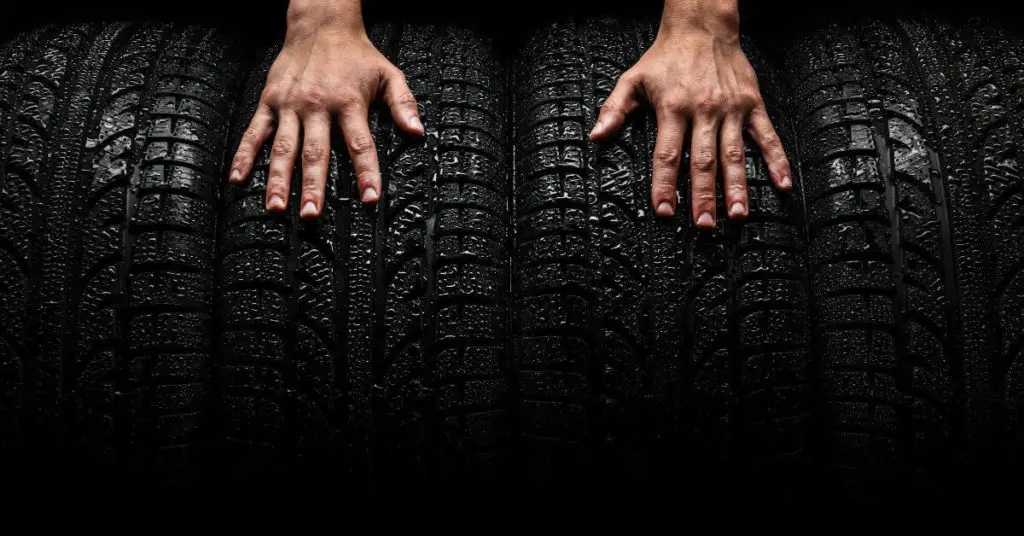
It is essential to know when your car needs new tires. This is because they are the only thing that connects your car to the road.
Without them, your vehicle won’t be able to move at all. The following are some signs that you may need new tires:
- If a tire has a puncture,
- If one of the tires has a bulge or an irregularity in its sidewall
- If one of the tires has cracks in it
- If one of the tires has significantly less tread than other tires on the same axle
- If you notice any uneven wear on your tread pattern
How to avoid getting a flat tire?
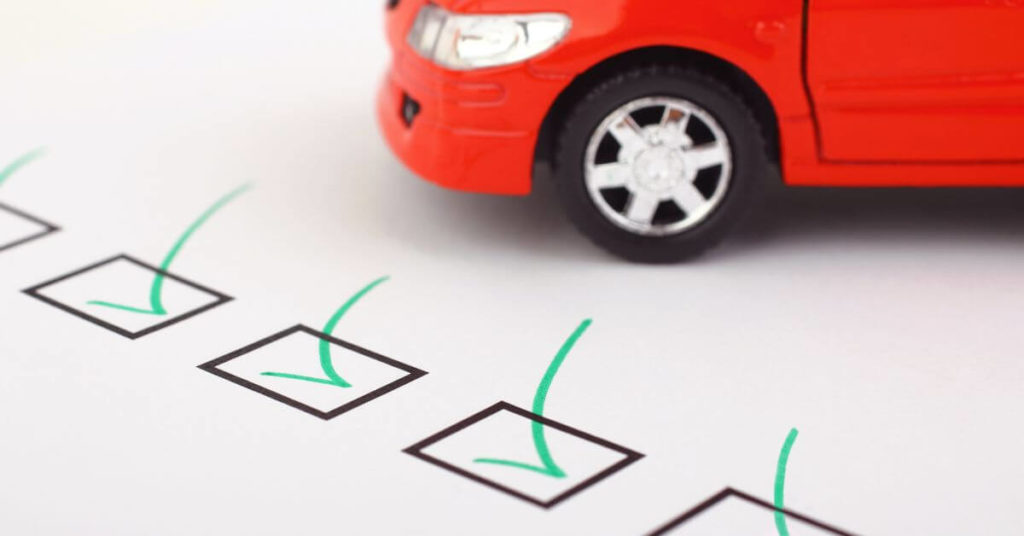
Sure, you may be good at preventing flats. But are you good enough to avoid them forever?
If not, it’s worth putting the odds in your favor and taking the following precautions:
Monthly tire pressure check.
To maintain the safety of your vehicle, it’s essential to check the tire pressure regularly. The NHTSA recommends checking the pressure at least once a month.
Regular maintenance will help identify and correct problems before they get too serious.
Need that air in your tires? Then, you should purchase a tire gauge to keep them at the correct pressure. This will help prevent a blowout and the risk of dangerous car accidents.
It’s essential to check the tire pressure often.
Driving with under-inflated tires can reduce fuel efficiency and increase wear and punctures.
Your TPMS (Tire Pressure Monitoring System) may not warn you about low tire pressure until a tire loses a considerable amount of air or when most/all tires are equally low.
A visible examination can be misleading – many tires lose half their pressure before unexpectedly becoming flatter.
Use a tire pressure gauge to measure your tire pressure (or find this information in your owner’s manual). This can help ensure that you are safe and keep worries at bay.
Regularly rotate tires.
People often forget that tires must also be rotated, which helps them last longer. The bottom line is to rotate your tires every 5000-10000, usually when the oil changes.
Rotation will help distribute wear and tear and extend the life of the tires. Visual checks should also be done monthly to ensure they’re not over or underinflated.
Signs of damage to the tires like bubbles, bulging, or cracking sidewalls and checking the tread wear ( minimum tread depth should be no less than 3/32 inches ) should also be routine.
Stay within a tire’s load limit.
Tires have a maximum load rating and tire pressure printed on their side. The heavier the load, the more strain on your tires, and surpassing the limitation can result in a blowout.
It’s important to realize how much weight you are putting on your car. If you see the tires starting to slip or feel the car sliding, increase your tire pressure and don’t surpass the maximum pressure allowed.
Scan the road for hazards.
While driving, be extra careful and pay attention to the road ahead. Roadways can be full of hazards for your tires. It’s best to constantly scan the road for potential problems like potholes, nails, or pieces of glass.
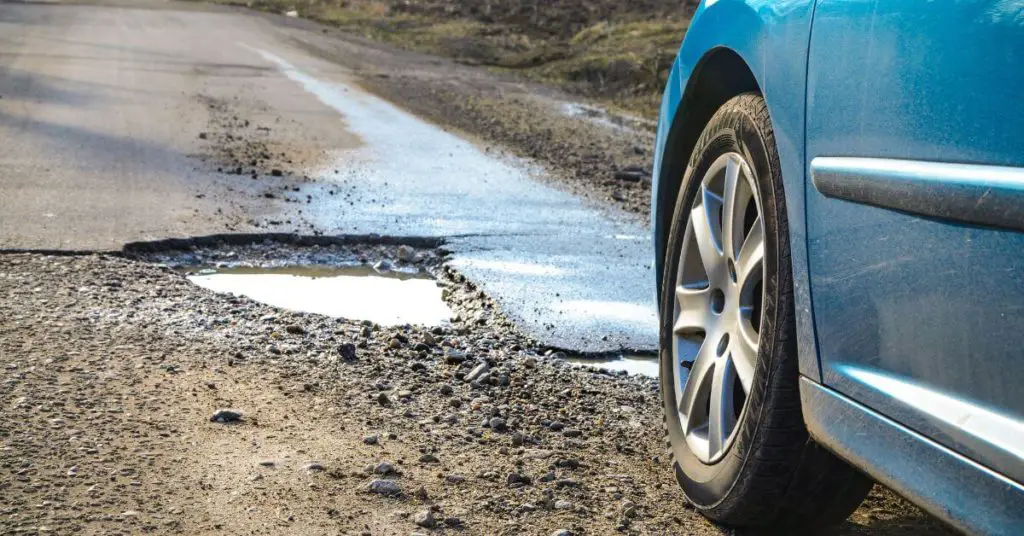
Potholes are a big problem for drivers in many parts of the world. They can be very dangerous and cause your tires to wear down or burst.
Other large road debris also causes damage to vehicles by shaking them when they hit them. So, if you see any large items on the road, stay clear!
Consider getting run-flat tires.
Although flats can be frustrating sometimes, there’s no getting away with leaving unscathed.
You never know when you might hit a nail or piece of glass on the road, so it’s always good to have a spare tire if one goes flat, but the best piece of mind is getting run-flat tires.
Run-flat tires were invented in 1935 by Michelin, and the first production vehicle with run-flat tires was the Citroën DS in 1955. In the 1970s, they were introduced to high-performance cars.

The run-flat tire is an automotive safety technology that allows a vehicle to be driven for limited distances after the tire has been punctured or otherwise damaged.
The tires are robust and flexible rubber with a stiffer sidewall to support the vehicle’s weight. The air pressure inside the tire is typically about 25% higher than normal, which provides extra strength and stability.
When one or more of these tires become punctured, deflated, or damaged beyond repair, it can still function as a “regular” tire while driving at low speeds (under 50 mph).
Can I drive on a flat tire in an emergency?
Driving on a flat tire is not advisable, but
there are some instances when driving on a flat tire is necessary, such as in an emergency where there is no other option. In this case, knowing how to do so safely and avoiding an accident is crucial.
You should keep your speed down and drive slowly enough that you don’t lose control of the car. Also, avoid hard braking or accelerating, which could cause the wheel to come off the ground and cause the vehicle to flip over or spin out of control.
Can I drive 4 miles on a flat tire?
This is a question that many drivers ask themselves. The answer is not simple and depends on many factors, such as the size of the tire, the type of tire, and how much air pressure is in it. Driving on a flat tire for too long can damage the car’s suspension and make a tire unrepairable.
Can I leave my car with a flat tire overnight?
A car can sit on a flat tire overnight, but it is not the best idea. Leaving your vehicle on a flat tire will stress other parts of the car, like rims.
If the tire loses pressure and a repair can’t be done immediately, position a jack under the side of the car to take the weight off the rim.
Can I drive one mile on a flat tire?
Driving more than a mile on a flat tire is not recommended. The car won’t be able to accelerate, and you’ll hear a loud thumping noise. You’ll also feel the vibrations through the steering wheel and seats.
Conclusion
Nearly all of us have driven on a flat tire at some point.
Driving on a flat tire can happen for shorter or longer periods and, in any case, should be avoided.
If you forget to pack your spare tire, encounter a flat along the highway, or have limited time or space to fix it, you might have no option but to drive with a flat tire.
Calculating the distance you can drive on a flat tire is impossible. The best thing you can do is keep your distance short and be cautious while on the road.
Understanding the bottom line when driving on ONE flat tire will help you escape the circumstances without harming your car or, most importantly, yourself if you are ever in this situation.
If you have any suggestions or questions, please email me here.




